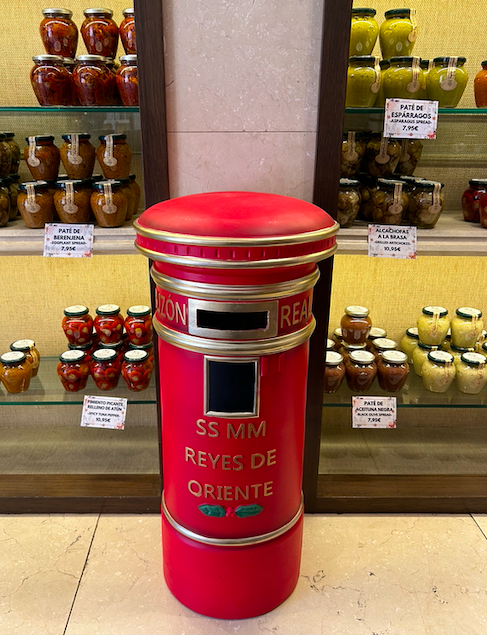
If you walk past the bakeries in Madrid in December, you’ll see the roscón de reyes pastries on display everywhere. This typical sweet treat is traditionally eaten during Epiphany, which is celebrated every year on January 6th. A special tradition is associated with eating it: in Spain, they celebrate… Los Reyes Magosalso known as Three Kings’ Day. A visit to a bakery near the Jardines de Lepanto taught me a lot about this Spanish tradition.
Three Kings
Epiphany is celebrated every year on January 6th by both Protestants and Catholics. The holiday commemorates the visit of the three wise men to the newborn baby Jesus in Bethlehem. The wise men began their journey after seeing a special star in the sky, which eventually led them to him. Throughout Spain, this day is known as Los Reyes Magos or Día de Reyes. The three kings from the biblical story were named Balthasar, Melchior, and Caspar. As you walk through the Christmas markets in Madrid, you’ll see small figurines of these kings everywhere. Interestingly, each king has a distinct appearance: Balthasar was of Asian descent, Melchior of European descent, and Caspar of African descent. They each brought a gift for Jesus: myrrh, gold, and frankincense. This is also where the Spanish tradition of giving presents during Día de Reyes comes from. On Los Reyes Magos, children are allowed to ask for a gift. Just as Jesus once received gifts from the three wise men.
'If the children were naughty, they got soot'
In the Netherlands, children write letters to Sinterklaas in which they tell him what gifts they would like to receive. In Spain, children also write letters, but they address them to the Three Kings. In these letters, they can ask for anything they want. “If you were naughty as a child, you got soot,” one of the bakers I spoke with told me.
At another bakery near Jardines de Lepanto, I spoke with Diana, a baker in an upscale shop where loaves of bread were elegantly displayed on decorative stands. Since it was December, there were all sorts of references to the holiday season, including nods to Los Reyes Magos. At the entrance stood a tall red mailbox with the letters SS.MM on it. That abbreviation stands for “Sus Majestades,” Spanish for “Their Majesties,” referring to the Three Kings.

Behind a glass display, I saw a Roscón de Reyes and asked Diana what it was. That’s how I learned it’s a traditional sweet in Spain eaten during Los Reyes Magos. It looks like a large donut, filled with whipped cream in the center. She explained that this treat is sometimes handed out in schools during the holiday celebrations. She also told me that small surprises are hidden inside. These are traditionally tiny ceramic or plastic figurines related to the birth of baby Jesus. In addition, there’s also a bean hidden in the filling, and the cake is presented with a golden crown. The person who finds the bean in their slice has to pay for the *Roscón de Reyes*, while the one who finds the figurine gets to wear the crown and be king or queen for the day.
A cultural exchange
To give Diana an idea of how holidays are celebrated in the Netherlands, I told her about Sinterklaas and how it differs from Santa Claus and the way Christmas is celebrated in the Netherlands. I also told her about *pepernoten*, a typical sweet treat that children eat during the Sinterklaas festivities. The cultural exchange happened spontaneously and beautifully showed that, although the Netherlands and Spain are not far apart, their traditions can be very different. It’s almost like stepping into another world.
